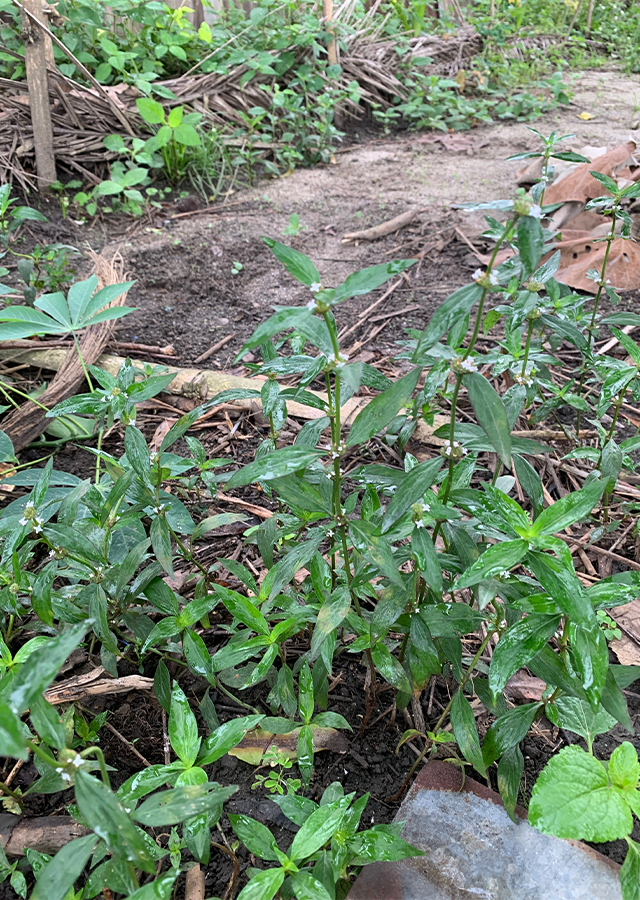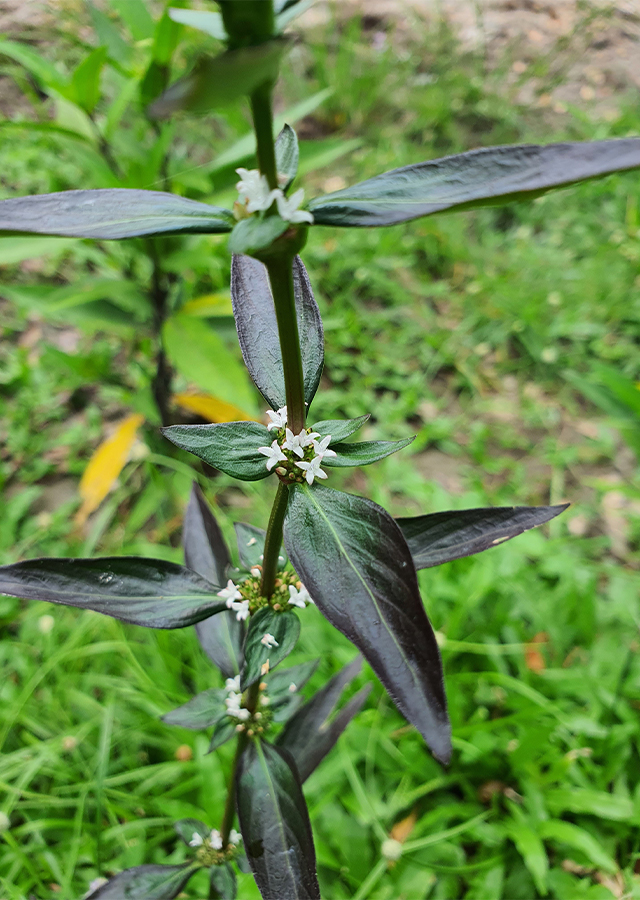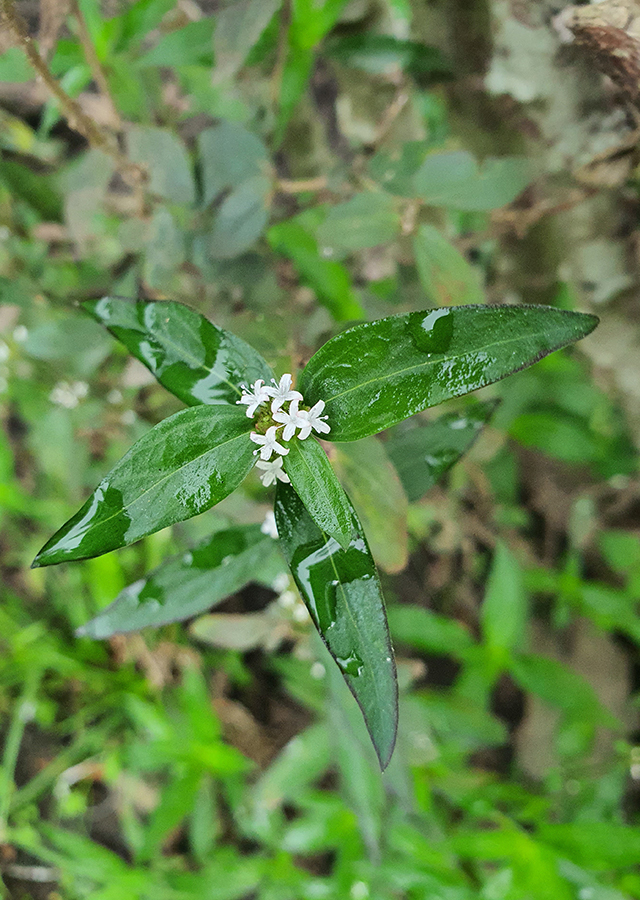Eared-leaf Diamond Flower
Exallage auricularia (L.) Bremek.
Rubiaceae
Location in our garden
Principal



Synonym
Dimetia auricularia (L.) R.J.Wang
Hedyotis auricularia L.
Oldenlandia auricularia (L.) K.Schum.
Habitus
Herbaceous. A herbaceous, perennial, nearly erect to diffuse, hairy herb, 30-100 cm tall
Part Used
Leaves
Flowers
Roots
Stem
Growing Requirements
Full Sunshine
Need Shade
Habitat
Riverbanks
Forest
Roadside
Shrublands
Grassland
Overview
The plant distributed in open places and thickets at low and medium altitudes in Philippines. Also occurs in India to southern China and through Malaya to Australia. The plant is harvested from the wild for local use as a medicine and sometimes as food.
Vernacular Names
An dien tai (Vietnamese), Tong haeng (Thai), Kenikah batu, kerekah batu (Malaysia), Pu di zhan cao (Chinese).
Agroecology
E. auricularia occurs in thickets, forests, wet grassland, shady roadsides, rubber, tea or cinchona plantations or along water sides, at 10-1,600 m altitude.
Morphology
- Roots - have primary root with a lot of lateral roots, rooting at the nodes.
- Stems - branched, hairy herb, with the branches 15 to 45 cm long, weak stems that creep along the ground.
- Leaves - ovate-lanceolate or lanceolate, 2 to 7.5 cm long, and 0.8 to 1.5 cm wide, smooth or scabrid on the upper surface, and often hairy beneath.
- Flower - white, bell-shaped; tube about 1 mm long, petals 4, curled back, hairy at throat. very short stalks and borne in axillary, very dense cymes. Calyx-teeth are small, shorted than the indehiscent fruit.
- Fruits - crowded, ovoid, about 1.5 mm in diameter, and clasped by a persistent calyx.
Cultivation
Propagated by seeds.
Chemical Constituents
Anthraquinones, iridoid glycosides, alkaloids, tritepenoids, saponins, alizarin, alkaloid hedyotine, auricularine, ursolic acid, oleanolic acid.
Traditional Medicinal Uses
- Studies have suggest antidysenteric, antidiarrheal and emollient.
- In Southern India, decoction of green leaves and roots is used for treatment of colitis.
- In Sri Lanka, it is used for dysentery, diarrhea, and lowering blood pressure.
- A decoction or extract of the leaves or the whole crushed leaves are taken in the treatment of intestinal problems, including dysentery, and also to treat cholera.
- A paste of the leaves is considered emollient and is applied to abscesses and wounds.
- The boiled leaves are rubbed on aching parts of the body or applied as a poultice on cracked skin.
- The leaf juice is applied for diseases of the eyes.
Part Used
Reference Sources
Terrell, Edward & Robinson, Harold. (2003). Survey of Asian and Pacific Species of Hedyotis and Exallage (Rubiaceae) with Nomenclatural Notes on Hedyotis Types. Taxon. 52. 775-782.
Tropical Plants Database, Ken Fern. tropical.theferns.info. 2021-11-30. <tropical.theferns.info/viewtropical.php?id=Exallage+auricularia>
Wu, Z., Raven, P.H. & Hong, D. (eds.) (2011). Flora of China 19: 1-884. Missouri Botanical Garden Press, St. Louis.

